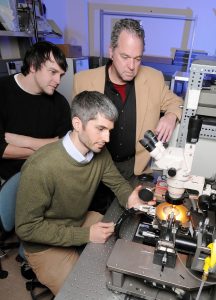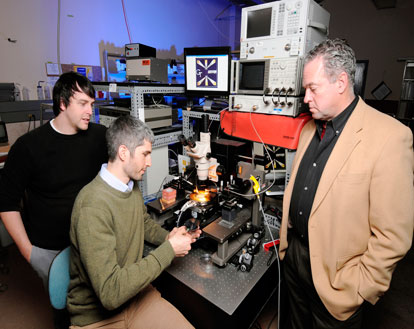
Researchers from the Georgia Institute of Technology in Atlanta, Ga. have developed a new device that could help reduce the size, cost, complexity and power requirements of current phased array technology.
Modern radar systems are depending increasingly on phased-array antennas—a design in which signal beams are directed electronically by grids of solid state components—because fixed solid state electronics are considered to be faster, more accurate and reliable than the moving mechanical parts of traditional electro-mechanical antennas. However, phased-array antennas require large “supporting electronics” to operate, placing limits on how small the antenna systems can be made.
According to Georgia Tech Research Institute (GTRI) research engineer Ryan Westafer, the research team’s “ultra-compact passive true time delay” device uses acoustic delay lines embedded within thin film materials to produce the type of signal delay “essential to phased-array performance.”
“Most true time delay equipment currently uses long, meandering electromagnetic delay lines—comparable to coaxial cable—that takes up a lot of space,” Westafer said. “In addition, there are some time delay designs that utilize photonic technology, but they currently have size and functionality drawbacks as well.”
With the use of the embedded acoustic delay lines, the new device has the capability to be condensed into a size “thousands of time smaller” than currently-used electrical delay-line designs, and can be “integrated on top of semiconductor substrates [often] used in radar systems,” he added.
Demonstrations completed by the research team have shown that the current version of the ultra-compact passive true time delay device is capable of “handling radar signals at 100 percent bandwidth while delivering a 10 nanosecond delay.” Some remaining technical issues, including signal loss, are being addressed. The team hopes to have the device ready for market in the near future after further testing is completed.
For more information, visit the Georgia Institute of Technology.
